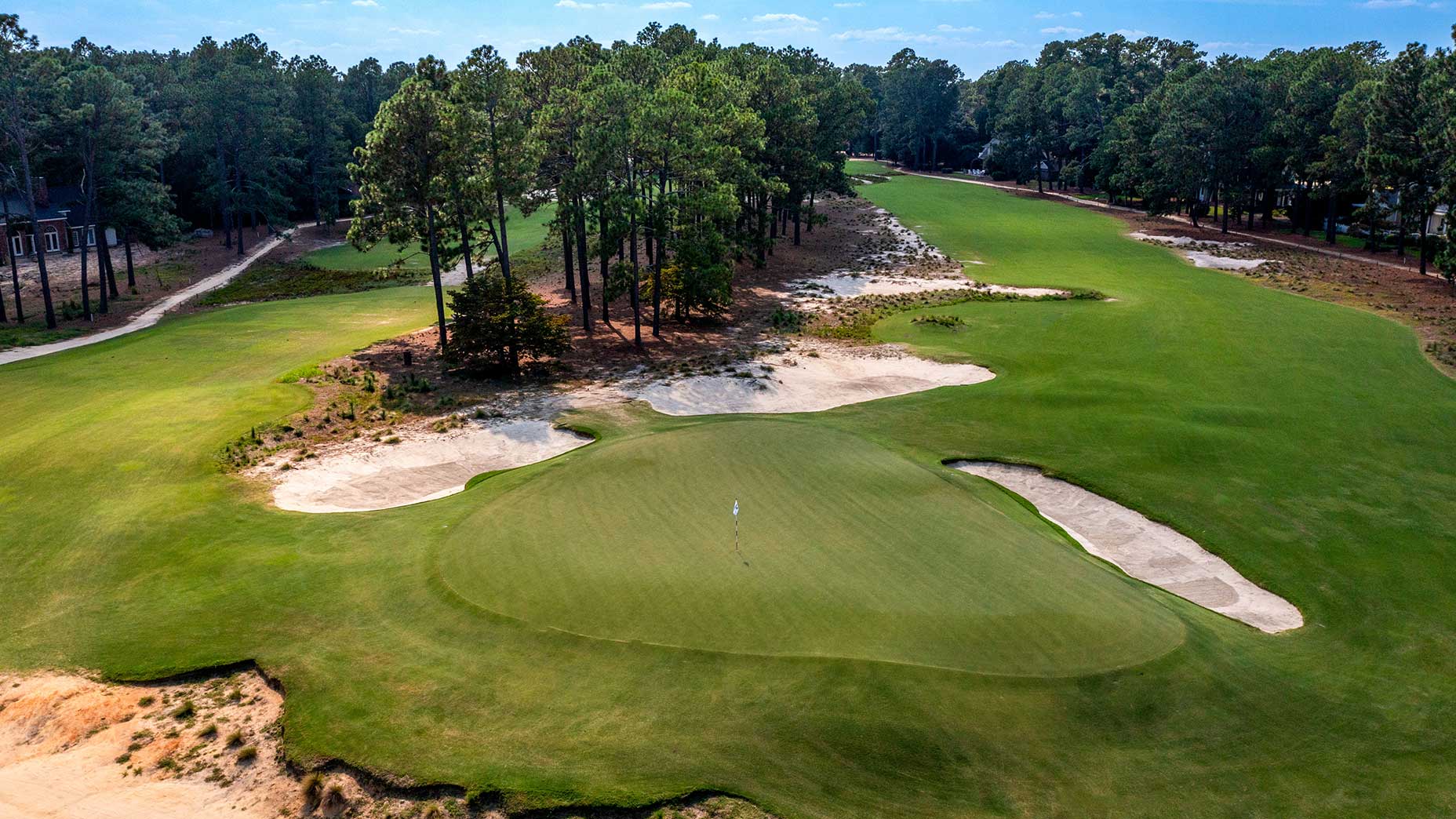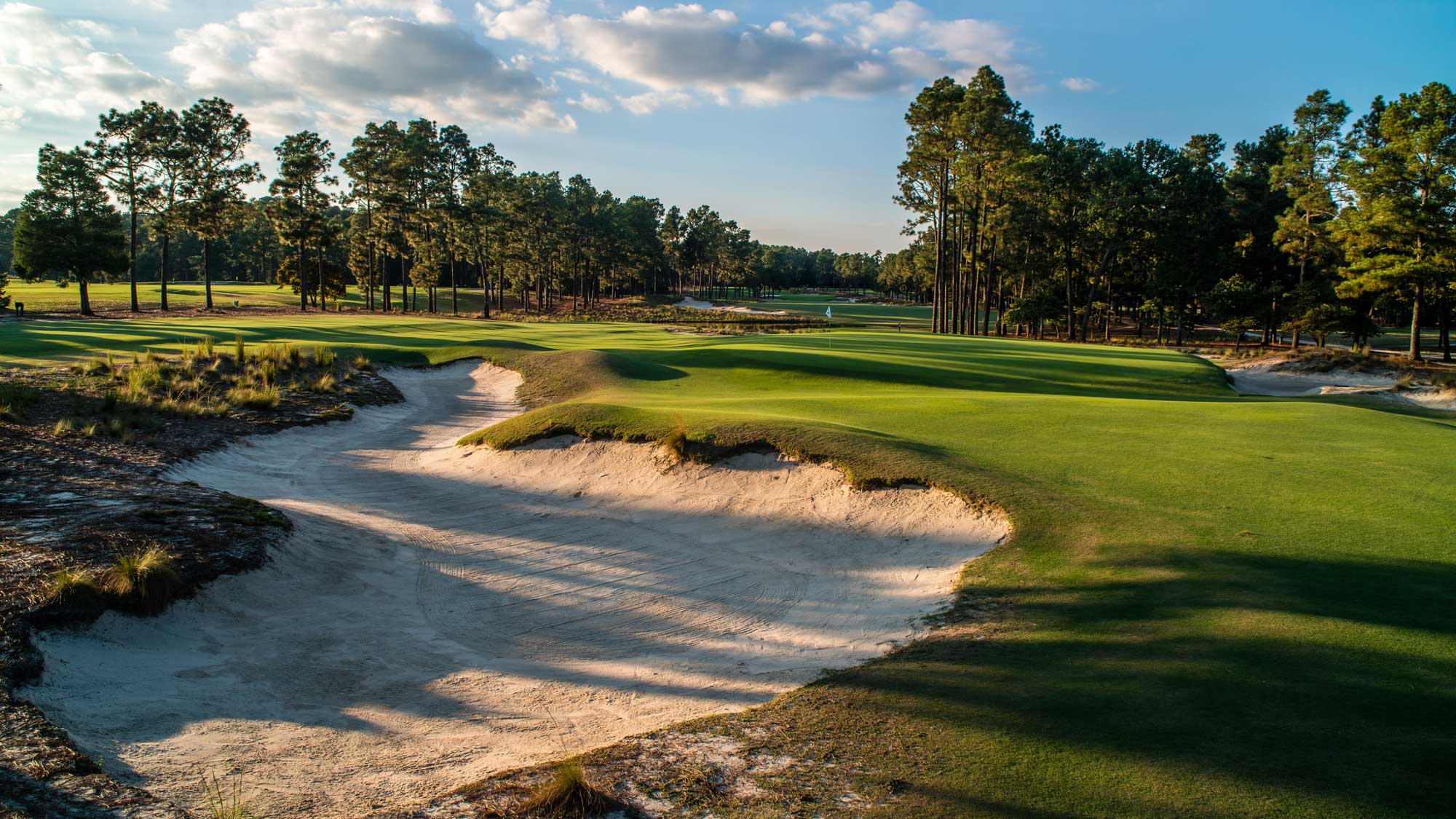GOLF’s Top 100 course panelists are among the most respected and well-traveled course evaluators in the game. They’re also keen to share their opinions. In this GOLF.com series, we’ll unlock their unvarnished views on all questions course-related. Check out GOLF’s latest Top 100 Courses in the U.S., Top 100 Courses in the World, Top 100 Courses You Can Play, Best Municipal Courses in the U.S., and 100 Best Short Courses.
Much is often made of the greens at Pinehurst No. 2. What exactly makes them so challenging, and is that challenge really all that different from what we see at other U.S. Open venues?
Paul Rudovsky, panelist since 2015: The fall-offs on all four sides of the greens (though generally more gradual in the front) are extremely challenging, as is the narrowness of some of the greens. Positioning is key to set up approach shots, but that will be tougher with firm and fast conditions, which will make it hard to keep tee shots from running through the fairway.
10 things you probably didn’t know about Pinehurst No. 2By: Josh Sens
Michael Robin, panelist since 2023: The greens also appear much larger from the fairway, but the actual usable square footage to keep a shot on the green is much smaller, given the fall-offs. That applies whether you have an approach from the fairway, a pitch or chip, or even a putt. You will definitely see some players putting a ball off the green as they try to get to tucked pins near the runaway slopes. Strategically, what always strikes me about No. 2 is that you have to play the course backwards, knowing where the hole is that day, then plotting where you want your approach angle to be from, which then dictates where you need to position your drive. If you are off on any of that execution, you end up with shots that will be repelled by those greens, so you have to play to the fat part and will likely end up with long putts or tricky chips. Players that drive it to the right places and manage their long putting should do well this week.
Will Davenport, panelist since 2020: Echoing the above, the “effective” size of the green is much smaller than the total green area given the runoffs on all four sides. Not only does that make the approach harder, but shots from greenside have the difficult requirement of tightly managed trajectory and pace if you are to navigate the steep grades. While the course will be firm and fast, many holes have pronounced turns — meaning you can run through fairways easily and that can take the length advantage away from players. Hopefully, the “angles” crowd will be pleased by the sharp corners and firm turf, which will put a premium on strategy.
Pete Phipps, panelist since 2021: What sets Pinehurst greens apart from other traditional U.S. Open venues is the fact they aren’t immediately surrounded by thick rough. Instead, we’ll see balls roll off into waste areas or deep surrounds with tight lies. At venues like Winged Foot, Pebble Beach and Oakmont, when a ball rolls through a green, it immediately hits a wall of thick rough. This week, those same shots will continue to roll for 15-30 more feet in different directions, leaving players three to four different options on how to play their next shot. As we witness each July during the Open Championship, golf is most entertaining when the ball is rolling along the ground, which we’ll get to see plenty of at Pinehurst.
Thomas Brown, panelist since 2015: Unique across all U.S. Open sites, the mowers are only cutting two heights this week — fairways and greens. Native sand and wiregrass areas certainly require attention from Pinehurst No. 2 superintendent John Jeffreys, but no intermediate cut is slowing a ball down from entering an unpredictable lie off the fairway.











